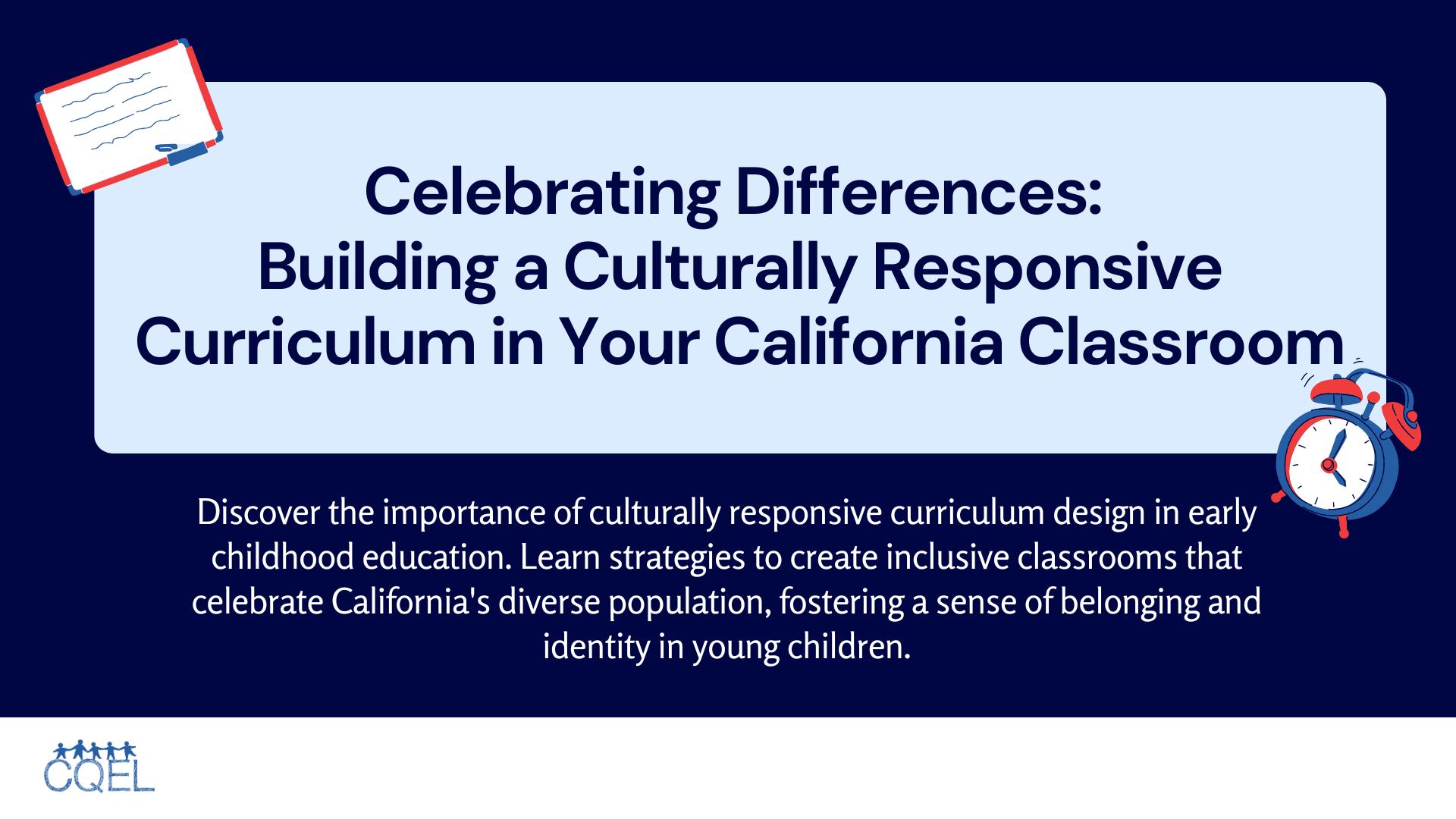Celebrating Differences: Building a Culturally Responsive Curriculum in Your California Classroom
Learn strategies to create inclusive classrooms that celebrate California's diverse population, fostering a sense of belonging and identity in young children.

California's diverse population presents a unique and enriching opportunity for early childhood education providers. Creating a curriculum that honors and celebrates this diversity is not only essential, but also fosters a sense of belonging and identity in young children. This blog post delves into the concept of culturally responsive curriculum design, equipping aspiring childcare providers with strategies to weave a tapestry of inclusion within their classrooms.
Understanding Cultural Responsiveness: Moving Beyond Stereotypes
Culturally responsive curriculum design goes beyond simply incorporating holidays or traditional foods from different cultures. It's about recognizing the unique experiences, backgrounds, and languages that each child brings to the classroom. This approach strives to move away from stereotypical representations and instead, create learning environments that reflect the children's lived realities.
Building Strong Foundations: The Importance of Family and Community Collaboration
Building strong relationships with families is the cornerstone of creating a culturally responsive curriculum. Actively engage families by inviting them to share their cultural traditions, stories, and languages with the classroom. Organize events that celebrate cultural diversity and create a welcoming space where families feel comfortable contributing to their child's learning journey.
Representation Matters: Reflecting Diverse Perspectives in Learning Materials
The books, toys, and learning materials you provide should reflect the children's diverse backgrounds. Strive to curate a collection that showcases characters with different skin tones, abilities, family structures, and cultural backgrounds. Look for books written by authors from diverse ethnicities and ensure the illustrations depict a variety of cultural experiences.
Learning Through Exploration: Engaging Activities that Celebrate Differences
Curriculum activities should act as springboards for children to explore different cultures. Plan lessons that integrate music, art, dance, and storytelling from various traditions. Create opportunities for children to learn basic greetings or phrases in different languages spoken within the classroom community.
Assessment and Reflection: A Continuous Learning Process
Culturally responsive curriculum design is an ongoing process. Regularly assess the effectiveness of your curriculum and activities in engaging all children. Seek feedback from families and consider how you can further individualize learning experiences to celebrate each child's unique cultural identity.
California Resources for Inclusive Education
The California Department of Education's website offers a wealth of resources on culturally responsive teaching practices in early childhood education. Additionally, the California Association for the Education of Young Children (CAEYC) (https://caeyc.org/) provides valuable resources and professional development opportunities to support inclusive learning environments.
By embracing cultural responsiveness in curriculum design, you create a classroom that fosters a sense of belonging, celebrates diversity, and empowers all children to reach their full potential. This inclusive approach to early childhood education sets the stage for a more equitable and understanding future for generations to come.
